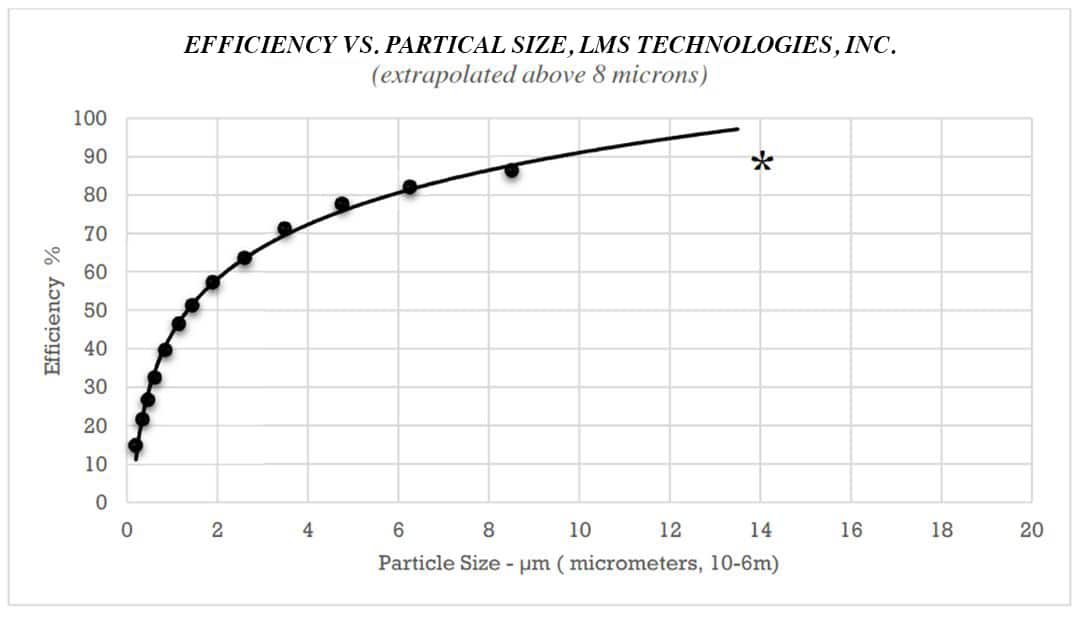Filters 90% of Harmful Airborne Particles at PM10 and 65% at PM2.5

Several layers of 3M electrostatic materials capture particles like a magnet. As particles adhere to the filters, the charged area increases and enhances its filtration capabilities.
Filtration
3M’s patented AEM™ (Advanced Electret Media) filter technology relies on the principles of electrostatic attraction. The high capture ratios and extended breathability attributed to 3M’s AEM™ material allow airborne particles to be captured within the filter. Rather than using a ‘screen’ approach to block the passage of particles, the charged fibers act as ‘magnets’ to retain particles while still allowing air to pass through – making O2 Nose Filters both breathable and effective.

The size of contaminants and particles are usually described in microns. There are 25,400 microns in one inch. When airborne, the Condensation Effect significantly increases the typical size of most particles. The size in the following chart is the “dry” particle size. The very smallest particulates take on H2O, increasing their perceived size by minimally 80% and as much as 1000% or even more dependent on conditions. For example, a 2.5μm size particle dry will be filtered wet at approximately 4.5 μm minimum in size or larger.

What is Particulate Matter?
Particulate Matter (PM) is the name given to a complex bunch of small, microscopic pollutants that float in the air. PM is commonly measured in microns or a micrometer. One micron is one-millionth of a meter. Particulates are often divided into two basic groups based on their size: PM10 (coarse) and PM2.5 (fine). These include pollution, dust, pollen, pet dander, viruses, bacteria, mold spores, and more.
Particle Comparisons
Expected filtration efficiency vs. application
The eye can see particles down to about 40 microns in size, but there are many smaller and potentially harmful ones floating in the air around us. For reference, the eye of a needle is 1230 microns.
Particulate Matter
Particulate Size*
O2 Filtration Efficiency
Allergic Reactions
Pollen
10–100 microns
90–100%
Pet Dander
1–9 microns
45–90%
Viruses and Bacteria
0.1–10 microns
25–90%
Mold Spores
10–30 microns
90–100%
Other Pollutants
Saw Dust
30–600 microns
99–100%
Smog
0.01–10 microns
15–90%
Diesel Exhausts
0.05–1 microns
25–40%
About the Condensation Effect
Particulate sizes shown in the chart above are typically given as the ‘dry’ size. Pollen, mold, bacteria, and viruses constantly absorb moisture from the air around them, which can significantly increase their size by 80-1000%*. The technical term for this process is the Condensation Effect. Since moisture can increase the size of particles, it further enhances the effectiveness of the filtration technology in O2 Nose Filters.
“Airborne Pollution at PM2.5 ranks 5th worldwide among all risks (for premature death), including smoking, diet, and high blood pressure.”
– State of Global Air, 2017
Allergic Reaction / Toxicity Testing
Purpose
O2 Nose Filters are made with medical grade polymer. This material was tested by Pacific BioLabs to evaluate the cytotoxic potential of extracts of polymeric materials, or any other materials intended to be implanted in the human body or that may come into contact with body fluids or injectable solutions. This test was performed according to PBL SOP 15B-01 which follows procedures outlined in ISO 10993-5.
Conclusion
The test articles were not considered to have a cytotoxic effect (no reactivity) according to the qualitative evaluation of cells exposed to extracts based on the grading criteria in ANSI / AAMI / ISO 10993:2009. Performed by Pacific BioLabs